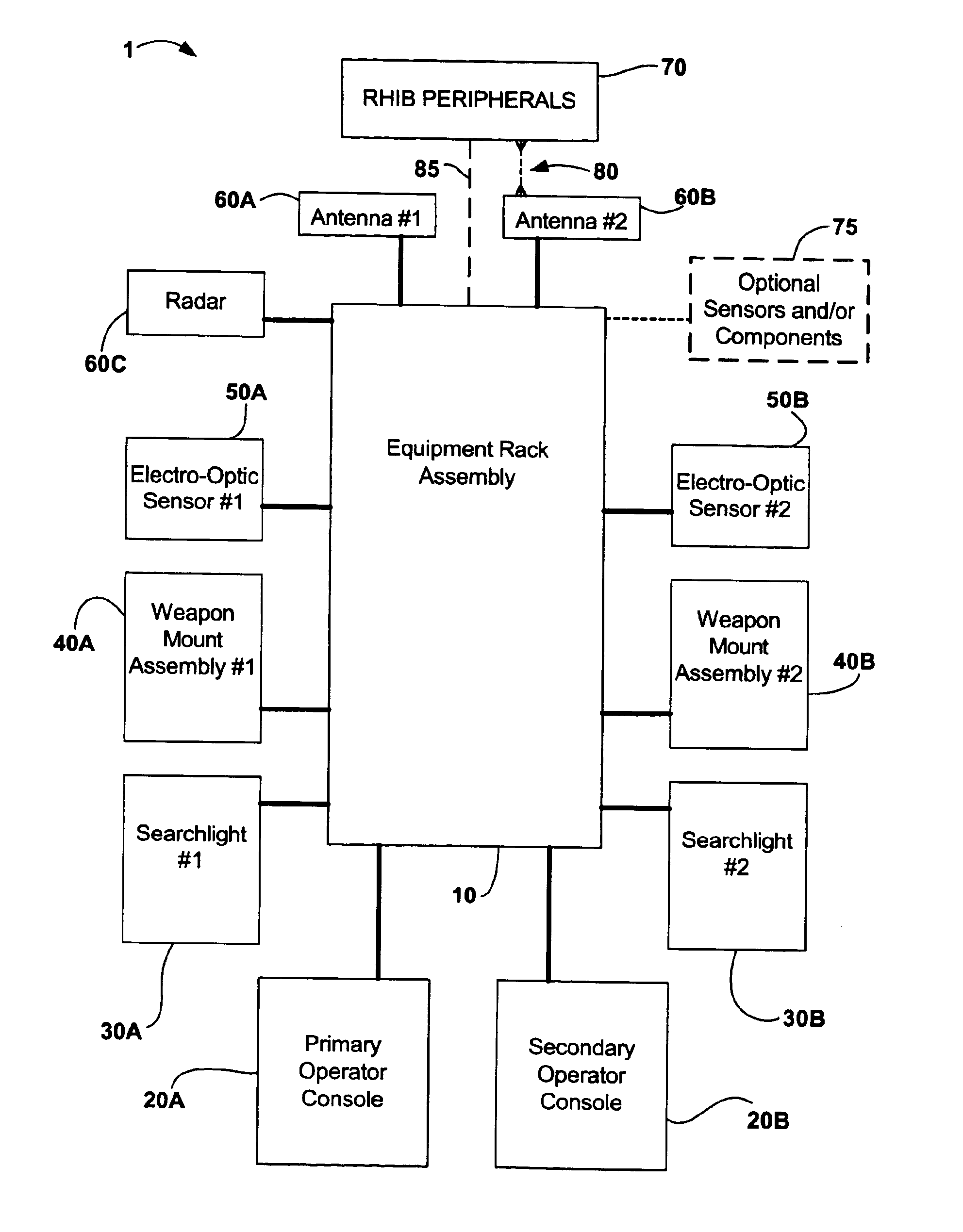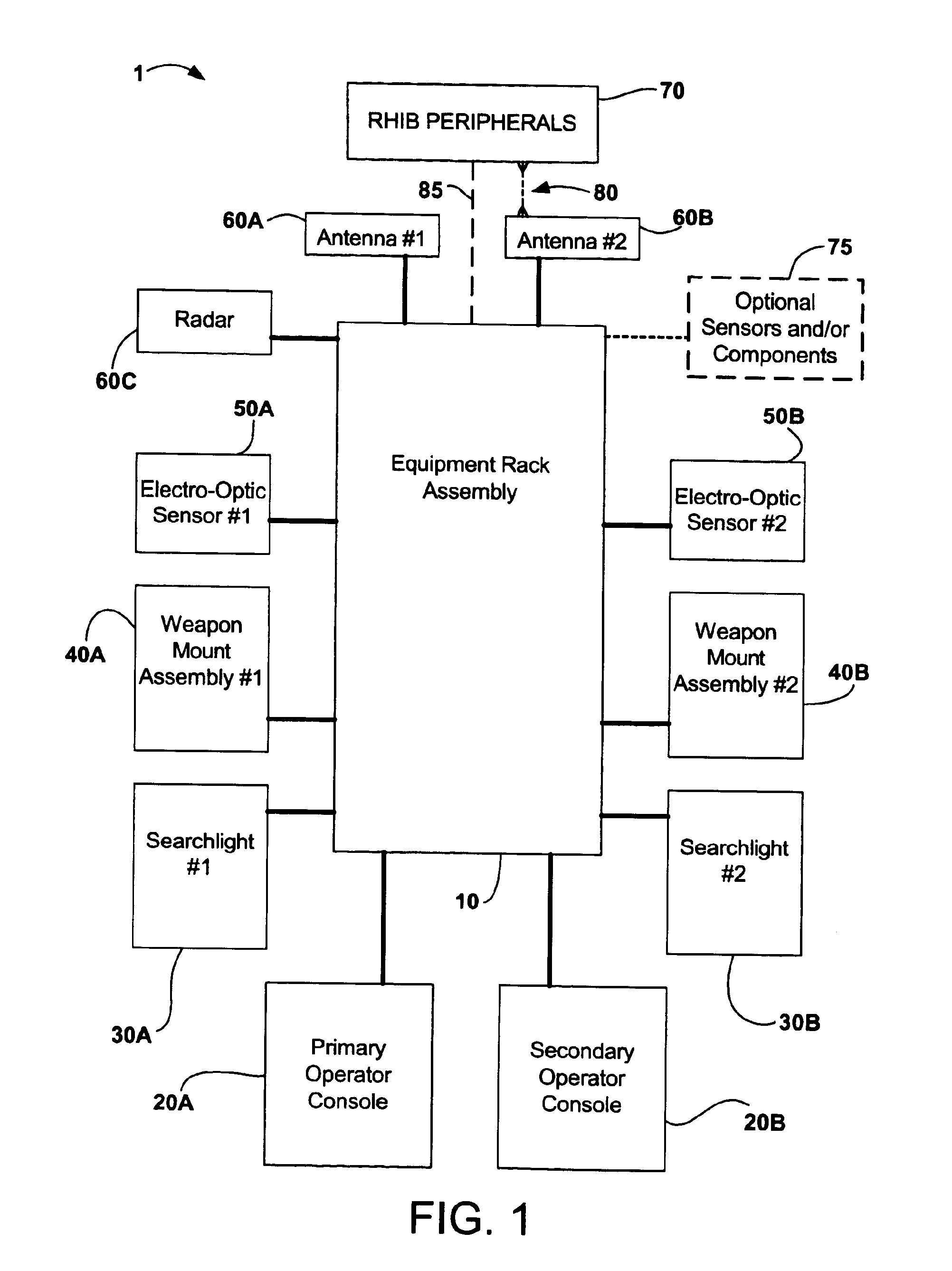Integrated radar, optical surveillance, and sighting system
- Summary
- Abstract
- Description
- Claims
- Application Information
AI Technical Summary
Benefits of technology
Problems solved by technology
Method used
Image
Examples
Embodiment Construction
[0024]While the following discussion illustrates preferred embodiments of the present invention, it does not limit the present invention from being implemented (and / or configured) in a myriad of other manners within the spirit and scope of this Application. Moreover, while the devices, software, circuits, and / or other components used in the present invention preferably come from the group of devices, software, circuits, and / or other components that are well-known, and / or are commonly (or readily made) available, other means of implementing the present invention may also be used as well. Furthermore, while the name being used herein for the present invention is “Integrated Radar, Optical Surveillance, and Sighting System,” it should not be considered that the present invention is limited to using only the named systems, subsystems, and / or components (i.e., “Radar” and / or “Optical” related systems, subsystems, and / or components).
[0025]Referring now to FIG. 1, a block diagram illustrat...
PUM
 Login to View More
Login to View More Abstract
Description
Claims
Application Information
 Login to View More
Login to View More - R&D
- Intellectual Property
- Life Sciences
- Materials
- Tech Scout
- Unparalleled Data Quality
- Higher Quality Content
- 60% Fewer Hallucinations
Browse by: Latest US Patents, China's latest patents, Technical Efficacy Thesaurus, Application Domain, Technology Topic, Popular Technical Reports.
© 2025 PatSnap. All rights reserved.Legal|Privacy policy|Modern Slavery Act Transparency Statement|Sitemap|About US| Contact US: help@patsnap.com



